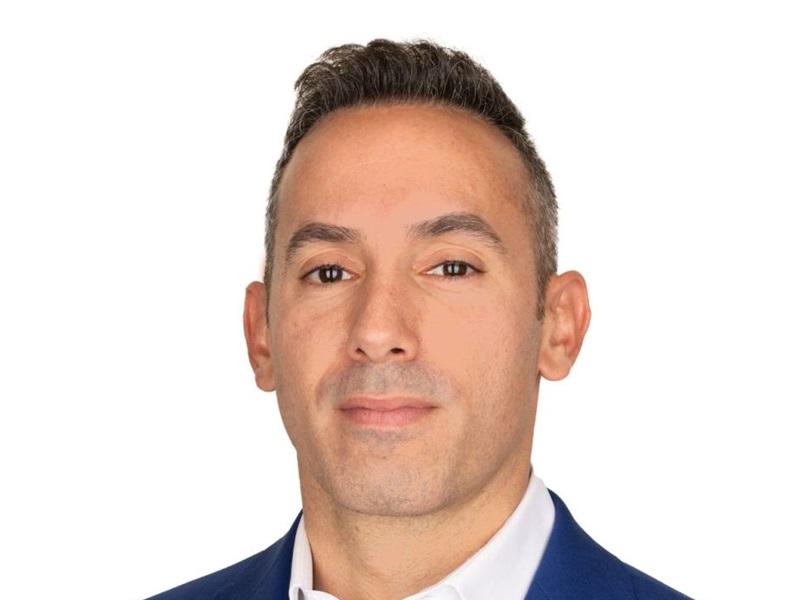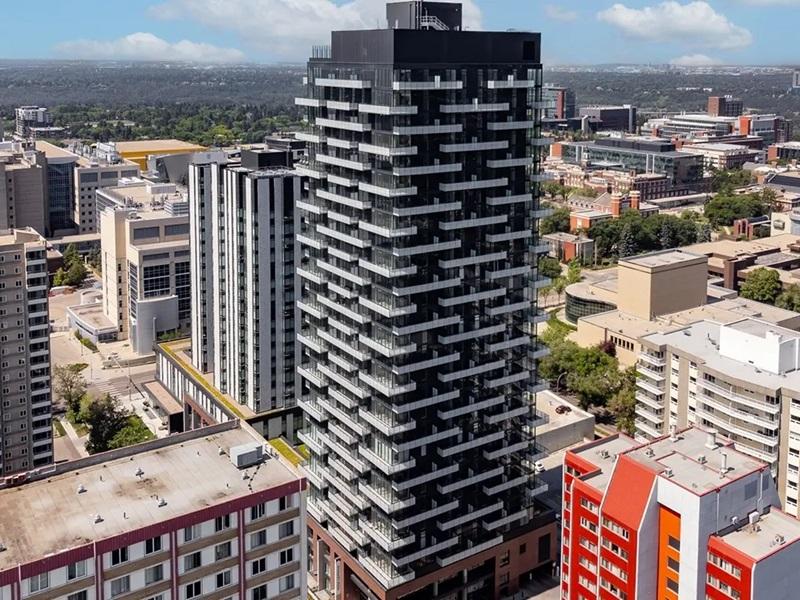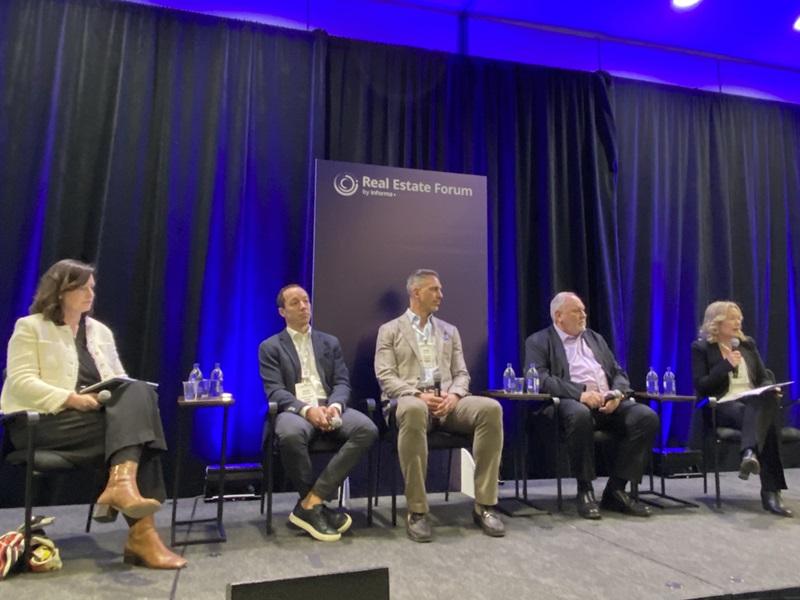
Canadian real estate investors have traditionally been quite active south of the border and five executives with inside knowledge of the American market shared their views during the Nov. 28 Global Property Market conference at the Metro Toronto Convention Centre.
“This is the time where you're going to be defining the next 10 years of your career and this is where the new fortunes are made,” Association of Foreign Investors in Real Estate (AFIRE) chief executive officer Gunnar Branson told the attendees. “This is the time, but it's also really, really hard.”
Washington, D.C.-based AFIRE acts as a forum for real estate investment thought leadership and caters to international investors focused on commercial property in the United States.
Branson moderated the discussion, which covered a wide range of sectors and strategic investment options.
Among them were multifamily and industrial/logistics, two hot sectors in Canada. However, the fundamentals are somewhat different in the U.S.
Sub-sector focus in multiresidential, industrial
Jeffrey Shuster is the head of U.S. investments for LaSalle Investment Management, which manages approximately $78 billion of assets in private and public real estate property and debt investments around the globe.
Shuster is responsible for LaSalle’s value-add business and said there’s now a focus on sub-sectors within the residential and logistics asset classes, including manufactured housing and industrial outdoor storage.
Even if multifamily and logistics aren’t performing as well now as in the past couple of years, he said they still have solid fundamentals and have proven to be resilient.
“Development just doesn't make sense anywhere in the States right now unless you're in some super-specialty niches,” said Grosvenor-Property Americas CEO Steve O’Connell.
His company develops, manages and invests in residential, office and retail properties in San Francisco, Washington, D.C., Seattle, Vancouver, Chicago and Los Angeles.
Oversupply of office space
Alfonso Munk is the chief investment officer for the Americas for Hines, a privately owned global real estate investment, development and management firm with $94.6 billion of assets under management as well as more than 101 million square feet of assets for which it provides third-party property-level services.
Hines has traditionally been a large office building developer and owner, but Munk said office now accounts for between 30 and 40 per cent of its portfolio.
“There's an issue with demand, there’s no question, but the real issue in the U.S. in office is supply,” Munk noted. “Before COVID and before the advent of working from home, we had a massive oversupply of office space in the U.S.”
There’s also bifurcation in the office market. Well-located and well-amenitized buildings with good layouts and public transit access are going to perform well, according to Munk.
“The capital markets are not seeing it and banks don't want to finance it, which is an opportunity for tactical people like us,” he said of the asset class. “But there are B-, C- and D- assets in the office space, because of the tendency of U.S. investors to oversupply everything, that are completely useless.
"That stuff, we wouldn't touch and I don't think anybody would.”
Branson said there was also an oversupply of retail space in the U.S., which hurt the asset class, but it’s now making a recovery.
Student housing is performing well
Gary Holloway is president and CEO of GMH Communities, a vertically integrated real estate company specializing in the acquisition, development and management of purpose-built apartments as well as housing, services and amenities for students and workers in the life sciences, medical, educational and technology communities.
Holloway said the company’s student housing portfolio is 97 per cent occupied, had 10 per cent rent growth last year and its pre-leasing is three per cent ahead of 2022 – its previous best year.
Holloway expects new multifamily housing starts to be 50 to 60 per cent below where they are now over the next two years due to high labour costs, interest and insurance rates.
O’Connell said his company has a proposed development a block from the University of California, Berkeley campus that was entitled and designed as a traditional apartment building.
However, a Grosvenor analysis found the return was clearly higher to build a furnished student-targeted building. It will likely do the same with a proposed development near Georgetown University in Washington, D.C.
“Our student housing buildings are doing really well, but we can't make our traditional multifamily pencil now,” O’Connell observed.
Is the shine off the Sun Belt?
Branson talked about the shift from the “Rust Belt” in the northern U.S. to the “Sun Belt” and the growth of southern markets over the past 20 years.
Recently, however, there have been issues in southern Florida and California with rapidly rising insurance premiums due to flooding, high winds and wildfires.
Eighty-five per cent of institutional investors believe environmental risk is still being underpriced, according to AFIRE research.
Munk noted some homeowners in south Florida are at risk of losing their insurance.
“I think there's an overwhelming sense that the demand growth that investors expect to help drive value will outpace what the potential risks are on the expense side,” Shuster noted.
Holloway said a shift from wood-frame construction to building steel and concrete structures would reduce the environmental risks and insurance premiums in south Florida.
Munk said many Sun Belt markets don’t have the infrastructure to absorb the increased demand. He expects cities such as Miami will end up with an oversupply of multifamily and office assets because they built too quickly.
Austin may have grown too quickly
Austin, Texas was the American city where institutional investors from around the world most wanted to be two years ago, according to Branson.
The preference has now flipped back to more traditional gateway markets and New York City has returned to its historical spot at the top of the list.
One-quarter of Austin’s apartment stock has been built in the past five years, according to O’Connell, who called it a “staggering” amount of supply.
“The October rent growth numbers came out and Austin, which is like the poster child for the Sun Belt from my perspective, had negative 5.6 per cent rental growth in that reporting compared to a one per cent U.S. average,” said O’Connell.
“The sheer volume of supply that's coming, which is a result of the lack of barriers to entry that exists in the Sun Belt, is going to have a pretty material impact on potential rent growth for those cities in the next few years.”
“It's such a shallow market from a talent perspective and from an employer perspective,” Branson said of Austin.
“If you're a tech hotshot and you move to Austin for that great tech job, your next job is probably going to be back in the Bay Area or New York because you have much greater density — not just of people, but of companies and opportunities and an ecosystem.”
O’Connell pointed out traditional real estate cycles have seen “a flight to quality where people go back to the major cities where the values are more defensive because there are barriers to supply.”
He expects that to happen again.










